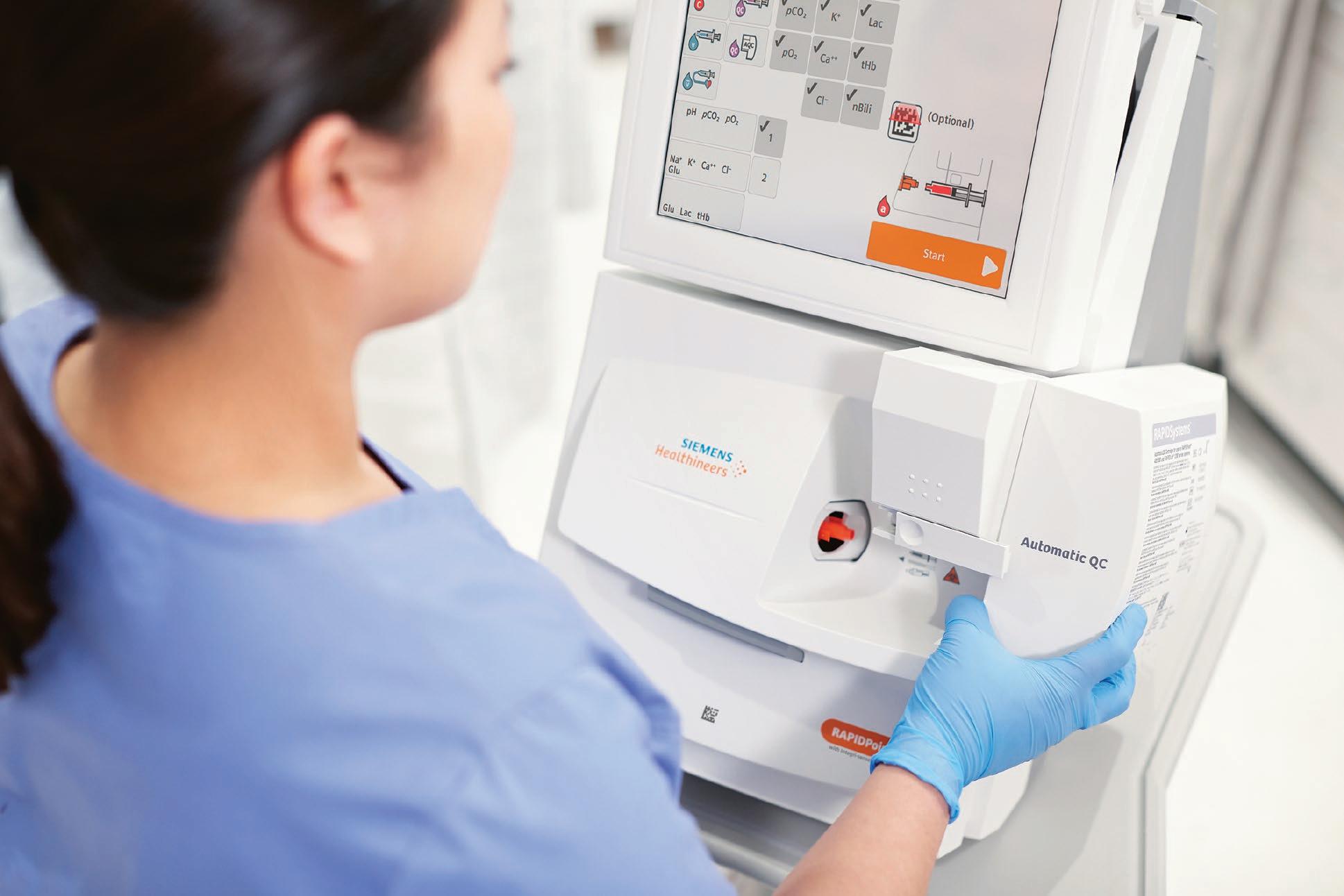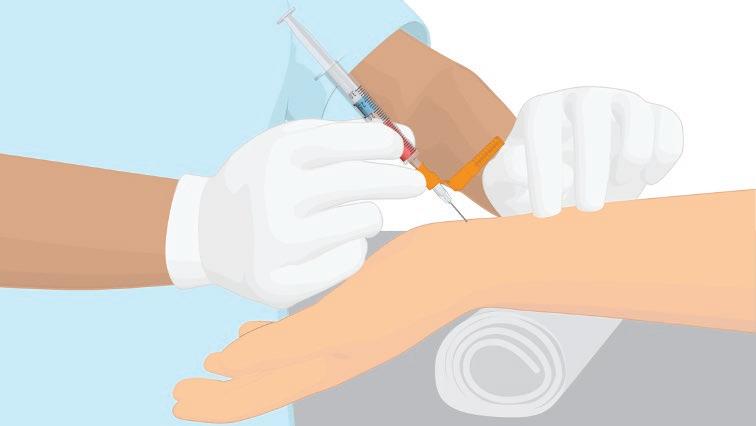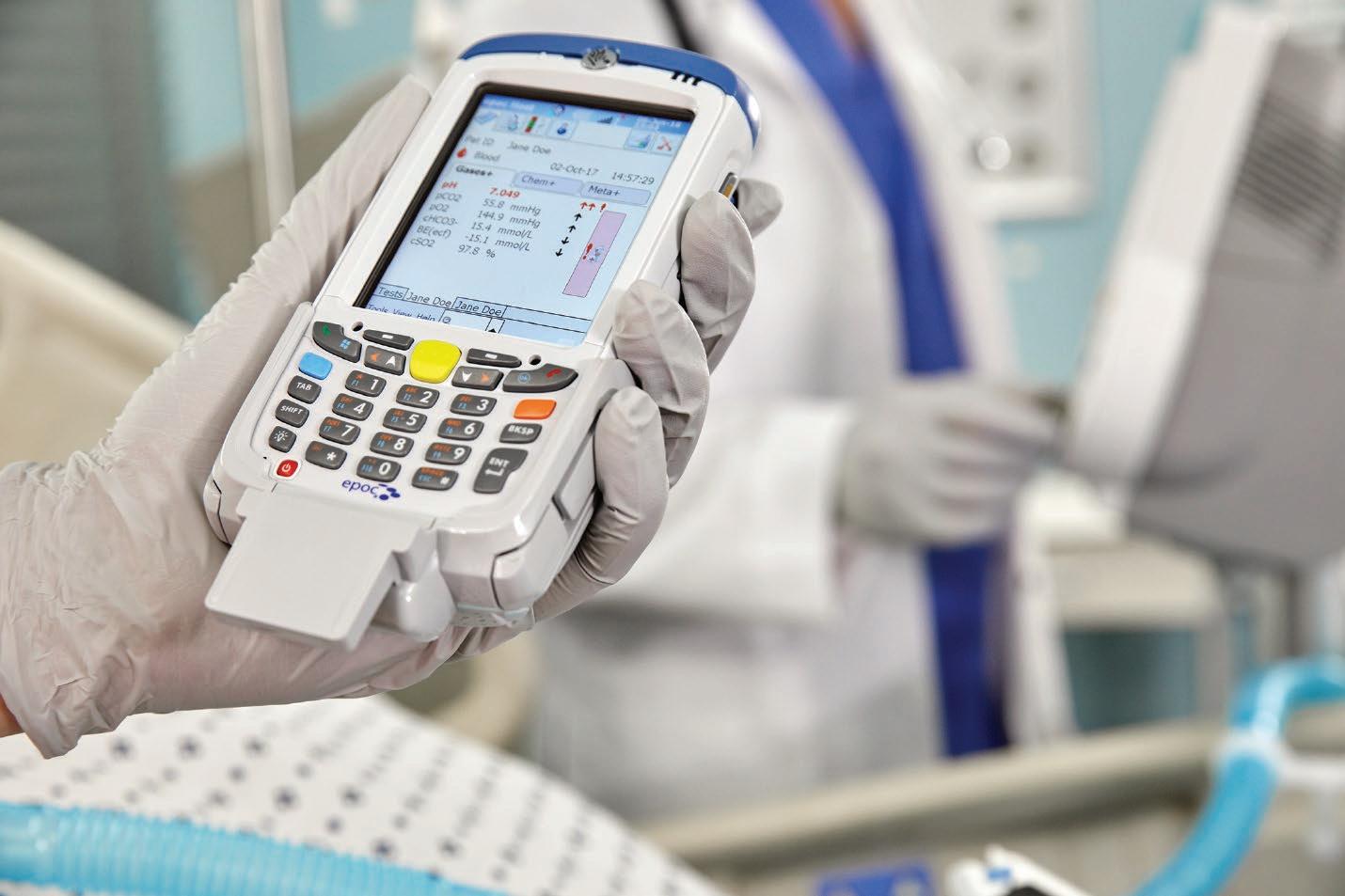
5 minute read
Considerations in Selecting a Blood Gas Analyzer
from Improving the Diagnosis and Monitoring of Critically ill Patients and the Role of Blood Gas Testing
Sophie Laurenson, BSc. BSc. (Hons.), PhD. (Cantab), EMBA, MRSNZ
Blood gas analysis is one of the most frequently ordered tests for many healthcare organizations. Healthcare providers have a range of options available to meet their demands for accuracy, safety, and convenience.
RAPIDPoint 500e Blood Gas System capillary sampling
Introduction
Over the last four decades, technological advances have translated into improvements in the performance and design of blood gas analyzers. Multiple manufacturers offer analyzers with expanded testing menus for use in clinical laboratories or at the point-of-care (PoC) [36]. Healthcare providers have a range of options available to meet their demands for accuracy, safety, and convenience. Improved clinical informatics capabilities enable healthcare professionals to collect, store, and analyze test data in a secure environment, providing timely access to data for actionable clinical insights.
Assay Menu and Performance Criteria
Modern blood gas analyzers offer broad menus, with integrated capabilities for measuring blood gases, electrolytes, metabolites, and co-oximetry. Menu and systems integration provides convenience for healthcare professionals
who wish to investigate multiple parameters that are relevant to patient oxygenation and metabolic status. In decentralized testing environments, this is especially important as additional clinical laboratory facilities may not be available on-demand 37 .
One of the most critical aspects in evaluating any diagnostic assays is to assess the analytical performance. Accuracy, precision, sensitivity, and specificity are all critical metrics on which tests should be measured. PoC tests often show greater analytical imprecision compared to automated laboratory analyzers 37 . Comparisons between laboratory analyzers and PoC instruments require rigorous investigation to ensure that results are consistent across healthcare organizations. PoC tests generally require smaller sample volumes, which is beneficial for reducing patient discomfort when serial testing is needed 38 . However, lower analytical volumes may be more challenging to analyze, contributing to reduced assay sensitivity.
Single test card offers a comprehensive test menu on the epoc Blood Analysis System

One of the significant advantages of PoC testing is the ability to conduct blood gas analysis in decentralized settings, close to the patient. Decentralized testing enables more efficient clinical decision making, leading to improved outcomes in time-sensitive settings. For PoC testing to be practical, the time-to-result (TTR) for each test should be minimal 39 . The extent to which multiple analytes can be tested simultaneously is also an important metric as this affects the overall throughput of each PoC analyzer instrument.
User-Friendly, Convenience: Considerations for Selecting Blood Gas Analyzers
Blood gas analysis is one of the most frequently ordered tests for many healthcare organizations [34]. Analyzers may be distributed throughout a hospital and in remote locations such as ambulances. Consequently, they should be suitable for different cadres of healthcare professionals to operate, including physicians, nurses, and paramedics, in addition to laboratory professionals 40 . Systems that are intuitive, user-friendly and low maintenance ensure reproducible, accurate test results.
Many blood gas analyzers designed for use at the point-of-care are small benchtop or handheld instruments. Bench-top analyzers containing individual analyte-specific biosensors have demonstrated high levels of assay performance, validated over decades of clinical use. These systems often have a broad test menu and offer the lowest operating costs. Systems that employ self-contained cartridges with biosensors and reagents facilitate simplicity and require minimal maintenance. These are available as benchtop and handheld instruments and are suitable for non-laboratory personnel to use 17 . Operating costs may be higher, although hands-free automatic sampling reduces pre-analytical sampling errors or between-user variability.
Quality Control (QC) and Quality Assurance (QA)
The results of blood gas tests are used to inform clinical decisions in critical conditions. Inaccurate test results may lead to adverse patient outcomes in these settings. The performance of blood gas analyzers requires continuous quality control (QC). In any laboratory or clinical setting, implementing rigorous QC/ QA programs is necessary to ensure accurate, reproducible performance.
Most QC processes require a comprehensive set of functional checks. Multi-level QC reagents are needed for calibration for all analytes, across their relevant measurement ranges. Sample quality and integrity checks may also be performed throughout a test protocol. Sample quality checks are assisted by sample ports that provide automated quality checks for blood clot management and air bubble detection.
Many modern blood gas analyzers provide onboard QC protocols that can be programmed for automatic operation or on-demand, providing flexibility and additional quality assurance (QA). In
the event of a QC failure, extra security features can prevent potentially erroneous results from being reported.
For efficient clinical workflows, networking between decentralized medical equipment is critical. Many healthcare organizations implement IT infrastructures that allow remote devices to be connected and communicate with each other. As blood gas analyzers may be distributed throughout hospital settings in the emergency department (ED), intensive care unit (ICU) and laboratories, safe and reliable communication protocols are essential. However, medical devices are often highlighted as a weak point in the IT security of healthcare organizations. Defects in medical device software is the underlying cause of many product recalls 41 . Security breaches have the potential to affect the effectiveness and safety of medical devices 42 . They also represent a broader threat to patient and data privacy. Recently, a cybersecurity firm reported that 90% of hospitals had experienced a cybersecurity attack within the previous two years and that networked medical devices had facilitated 17% of the documented attacks 43 . Robust security measures are required to guard confidential patient data and protect institutional IT infrastructure from cybersecurity

threats. However, traditional IT security solutions are not designed to protect heterogeneous systems with a variety of hardware, software, and operating systems. In these instances, on-device defensive capabilities are critical in preventing unauthorized access to medical device systems and data.
Modern laboratory and point-of-care analyzers offer options for protecting users from cybersecurity threats. Two-step authentication processes can be employed to identify users and their permissions, preventing unauthorized systems access. This feature is also useful for avoiding inappropriate access by staff members without adequate training or restricting the viewing of sensitive data. Embedded anti-malware and firewalls block unknown or unauthorized programs from operating within protected IT systems. Data encryption is a further protective measure that enables the secure transfer of sensitive patient data.
Conclusion and Future Outlook
Blood gas analysis in laboratory settings and at point-of-care is essential for the efficient delivery of care to critically ill patients. However, for the successful implementation of PoC testing, multidisciplinary teams of health professionals must be aware of the importance of each step in the analysis process and the need to implement appropriate quality management tools, training, and security protocols. Recently, a cybersecurity firm reported that 90% of hospitals had experienced a cybersecurity attack within the previous two years and that networked medical devices had facilitated 17% of the documented attacks







